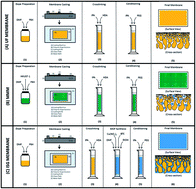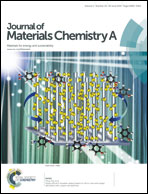Fabrication of hybrid polymer/metal organic framework membranes: mixed matrix membranes versus in situ growth
Abstract
Hybrid polymer/metal organic framework (MOF) membranes have been prepared using either a mixed matrix membrane (MMM) or in situ growth (ISG) approach and were evaluated for application in organic solvent nanofiltration (OSN). MMMs were produced by dispersing pre-formed particles of the MOF HKUST-1 in polyimide P84 dope solutions. MMMs demonstrated both (i) higher rejections of styrene oligomers and (ii) lower flux decline than the polymeric control membranes. Furthermore, an alternative hybrid membrane fabrication methodology – in situ growth (ISG) of HKUST-1 in integrally skinned asymmetric polymer membrane supports – has been successfully demonstrated. Ultrafiltration support membranes were submerged in HKUST-1 precursor solutions in order to promote the growth of MOF within the porous structure of the polymer membranes. The presence of HKUST-1 in the membranes was proven with X-ray powder diffraction (XRPD). Energy-dispersive X-ray spectroscopy (EDX) was used to reveal the distribution of HKUST-1 throughout the ISG membranes, and was found to be even across the surface and throughout the cross-section. The ISG membranes also had higher solute rejections and lower flux decline than the MMMs.


 Please wait while we load your content...
Please wait while we load your content...